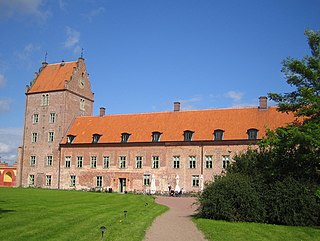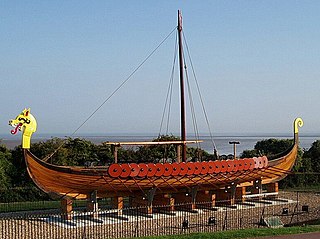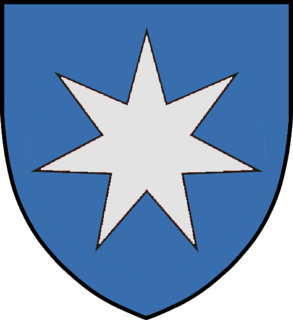 W
WBäckaskog Castle in Kristianstad Municipality, Scania, southern Sweden, was originally a monastery built in the 13th century. It was transformed into a castle in the 16th century. The castle is located on the isthmus between Ivö Lake and Oppmanna Lake.
 W
WBörringekloster Castle, formerly Börringe Priory is a castle built in 1763 on the ruins of a medieval Benedictine priory at Svedala in Scania, Sweden.
 W
WThe House of Estridsen was a dynasty that provided the kings of Denmark from 1047 to 1412. The dynasty is named after its ancestor Estrid Svendsdatter. The dynasty is sometimes called the Ulfinger, after Estrid's husband, Ulf the Earl. The dynasty also provided three of the rulers of Sweden in the years 1125–1412. Their family coat of arms became the coat of arms of Denmark and therefore influenced the coat of arms of Tallinn and the coat of arms of Estonia.
 W
WThe Hugin is a reconstructed longship located at Pegwell Bay in Kent, England. It was a gift from the Danish government commemorating the 1500th anniversary of the arrival of Hengist and Horsa, leaders of the Anglo-Saxon invasion, at nearby Ebbsfleet. The ship is a replica of the much later ca. 890 Gokstad ship.
 W
WHvide was a medieval Danish clan, and afterwards in early modern era a Danish noble surname of presumably one surviving branch of leaders of that clan. Before the 16th century it was not used as surname. It signified the color white.
 W
WThe Norsemen were a North Germanic ethnolinguistic group of the Early Middle Ages, during which they spoke the Old Norse language. The language belongs to the North Germanic branch of the Indo-European languages and is the predecessor of the modern Germanic languages of Scandinavia. During the late 8th century, Norsemen embarked on a large-scale expansion in all directions, giving rise to the Viking Age. In English-language scholarship since the 19th century, Norse seafaring traders, settlers and warriors have commonly been referred to as Vikings. The identity of Norsemen derived into their modern descendants, the Danes, Icelanders, Faroe Islanders, Norwegians, and Swedes, who are now generally referred to as 'Scandinavians' rather than Norsemen.
 W
WPomerania during the Early Middle Ages covers the History of Pomerania from the 7th to the 11th centuries.
 W
WPomerania during the High Middle Ages covers the history of Pomerania in the 12th and 13th centuries.
 W
WThe Principality of Rügen was a Danish principality consisting of the island of Rügen and the adjacent mainland from 1168 until 1325. It was governed by a local dynasty of princes of the Wizlawiden dynasty. For at least part of this period, Rügen was subject to the Holy Roman Empire.